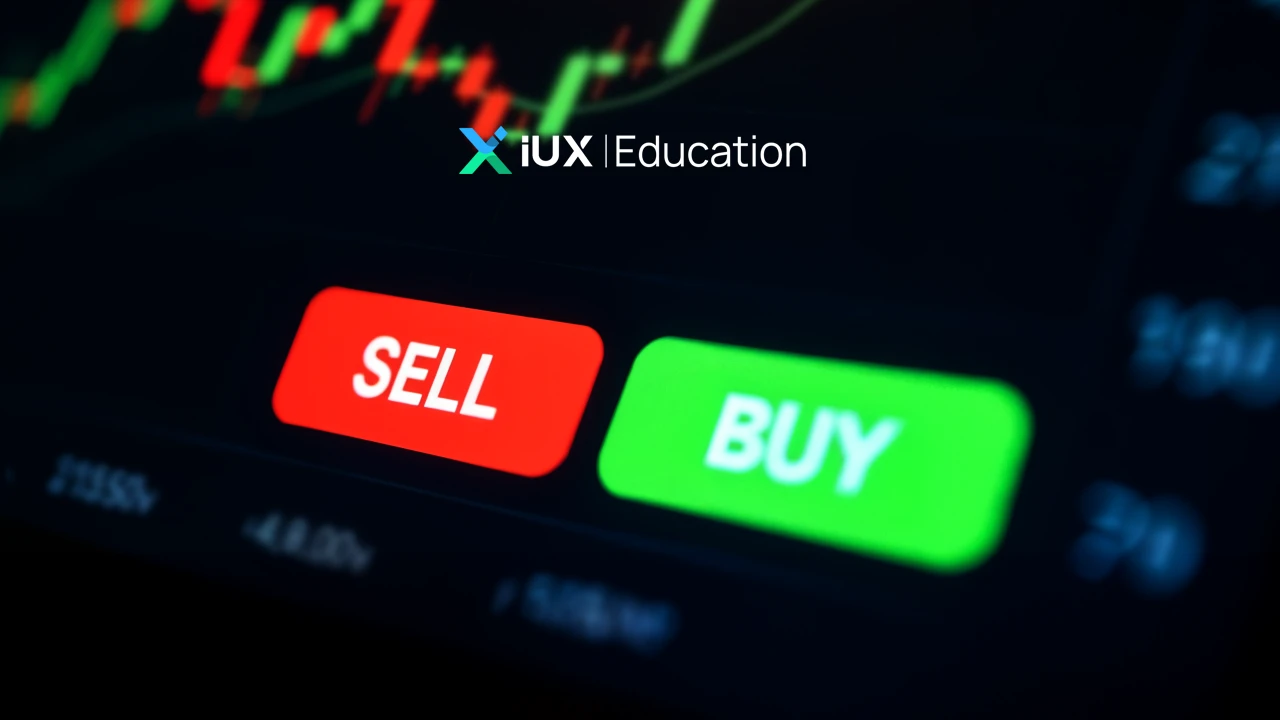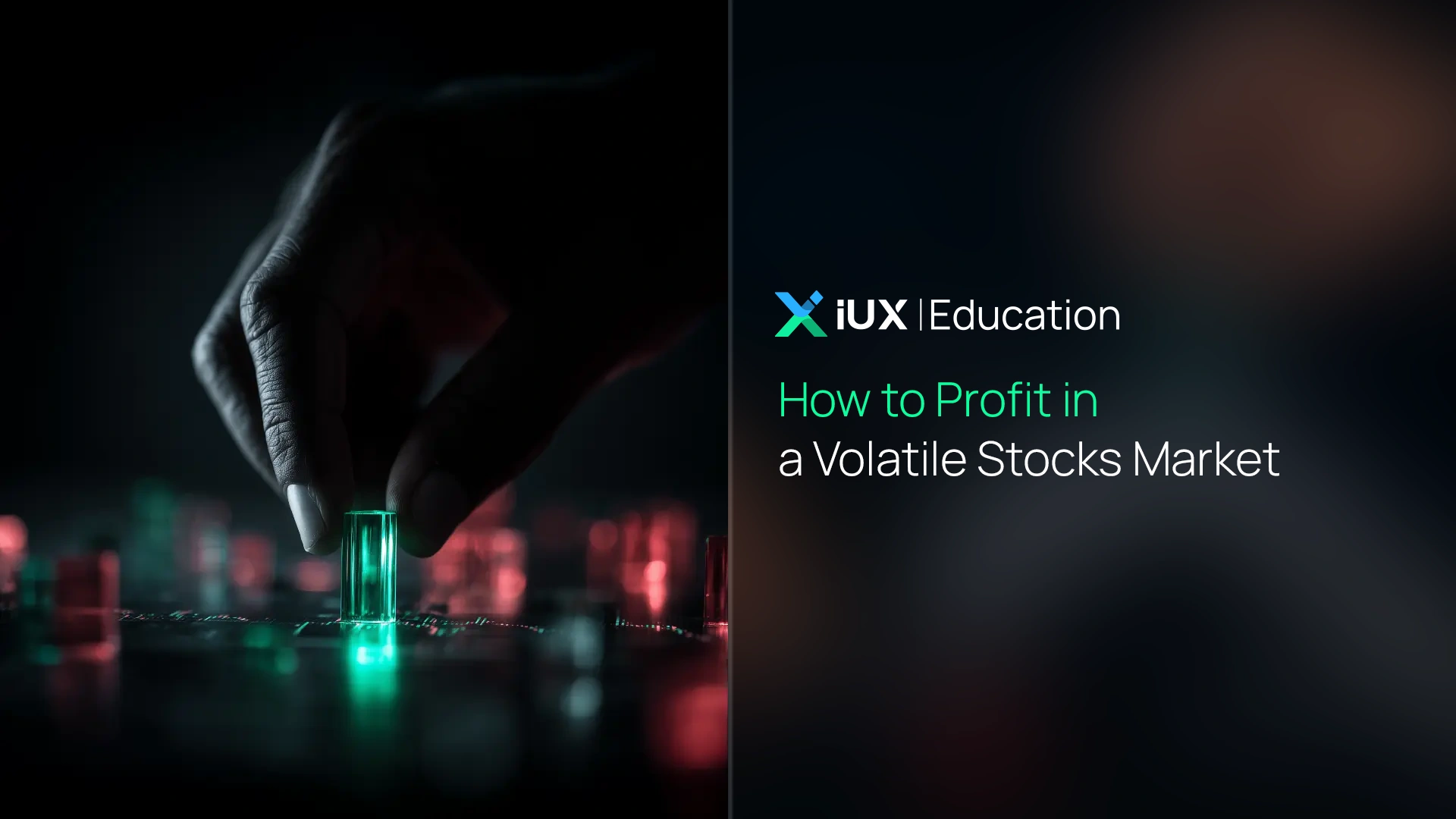CFDs are complex instruments and come with a high risk of losing money rapidly due to leverage. 76% of retail investor accounts lose money when trading CFDs with this provider. You should consider whether you understand how CFDs work and whether you can afford to take the high risk of losing your money.
CFDs are complex instruments and come with a high risk of losing money rapidly due to leverage. 76% of retail investor accounts lose money when trading CFDs with this provider. You should consider whether you understand how CFDs work and whether you can afford to take the high risk of losing your money.

Buy/Sell Terms and Key Trading Orders for Beginners
Buy/Sell Terms and Key Trading Orders for Beginners
If you’re new to trading in Forex, gold, or stocks, one of the first things you need to learn is the basic terminology such as Buy/Sell and the different types of orders used to enter a trade. Understanding these terms helps minimize mistakes and builds confidence in making trading decisions in different market situations.
This article serves as a beginner’s guide to help you correctly understand and use trading orders, with real-world examples and practical ways to manage risk systematically.
What Are Buy and Sell Orders in Trading?
-
Buy Order
A Buy order is placed when you expect the price of an asset to rise. For example, if your analysis suggests that XAU/USD (gold vs. the US dollar) is trending upward, opening a Buy order on XAU/USD allows you to profit as the price moves higher.
-
Sell Order
A Sell order is placed when you expect the price of an asset to fall. For instance, if a particular stock shows signs of a downtrend, you might open a Sell order to potentially profit from the decline in its price.
Placing orders correctly is one of the fundamentals of trading. Understanding Buy and Sell orders in depth gives you greater confidence in every trading decision you make.

Key Terms Every Beginner Trader Should Know
Basic Trading Orders
-
-
Buy: A Buy order is placed when you expect the price of an asset to rise.
-
Sell: A Sell order is placed when you expect the price of an asset to fall.
-
Spread: The difference between the Bid and Ask price. Generally, a tighter spread is more favorable for traders.
-
Leverage: A tool that increases your buying and selling power by using the broker’s funds. For example, opening a Buy or Sell position on gold with 1:100 leverage allows you to trade a larger position than your actual capital.
-
Margin: The collateral set aside in your account to open leveraged positions. The margin required 1
- Pip : The smallest unit of price movement in trading.
-
-
- Lot Size : The contract size that defines the number of units of the currency pair or asset you are trading.
For more details, see the articles on Buy and Sell (Trade) and Leverage (Trade)
Risk Management Orders
Managing risk with Stop Loss and Take Profit is essential for limiting losses and securing profits in volatile markets.
-
-
Stop Loss (SL): An automatic order that closes your trade when the price moves against you to a specified level.
-
Take Profit (TP): An automatic order that closes your trade once your profit target is reached.
-
Trailing Stop: A dynamic stop loss that adjusts as the market moves in your favor, helping lock in profits while allowing the trade to run further. 2
-
Recommended reading : Risk Management in Gold Trading
Pending Orders
A Pending Order is a pre-set buy or sell instruction that automatically opens a trade once the price reaches a specified level. This is useful if you can’t stay in front of the screen all the time.
-
-
Buy Limit: An order to buy when the price falls to your chosen level. Ideal if you expect the price to drop before moving higher.
-
Sell Limit: An order to sell when the price rises to your target level. Useful if you plan to sell at a higher price.
-
Buy Stop: An order to buy once the price breaks above a resistance level, signaling momentum to the upside.
-
Sell Stop: An order to sell once the price breaks below a support level, signaling a potential continuation downward.
-
Buy Stop Limit / Sell Stop Limit:
-
These are combination orders used when you want confirmation of price direction before entering, while also setting your own entry price.
-
-
-
Buy Stop Limit: The system first waits for the price to reach the Stop level (for example, break above resistance), then places a Buy Limit order at your specified price, which is usually equal to or lower than the market price after the breakout.
-
Sell Stop Limit: The system first waits for the price to hit the Stop level (for example, break below support), then places a Sell Limit order at your chosen price.
-
-
In simple terms, these orders confirm the market is moving in your expected direction before entering, and then place the trade only if the price pulls back to your set level.
Further reading:
Examples of Using Different Orders in Real Trading
-
Gold
Suppose you’re tracking the price of gold and notice it breaking above a key resistance level. This could signal the start of an uptrend. In this case, you might open a Buy order and place a Stop Loss just below the support level to limit risk if the price reverses.
On the other hand, if gold breaks below a major support level and begins trending downward, you could open a Sell order to profit from the decline in price.
-
Stocks
Imagine you’re analyzing a technology stock on the NASDAQ. After a period of decline, you spot potential signs of reversal—such as a bullish candlestick pattern or a technical indicator like MACD signaling a trend change. In this scenario, you might open a Buy order and set a Take Profit (TP) at a nearby resistance level to capture gains if the stock rebounds as expected.ว้
But if the same stock continues in a strong downtrend and breaks below critical support, it may indicate further downside. In this case, some traders might open a Sell order to take advantage of the continued price drop.
-
Forex (Currency Pairs)
Consider EUR/USD moving within a tight range before a major economic news release, which often sparks sharp price movements. Many traders prepare by setting Pending Orders:
-
-
A Buy Stop above the range, to enter if the price surges upward.
-
A Sell Stop below the range, to enter if the price breaks downward.
-
This strategy allows you to step away from the screen while still entering either a Buy or Sell automatically when the market breaks out of the range.
| Tip: Before placing any trade (Buy or Sell), always set your Stop Loss and Take Profit levels in advance. This helps control risk and prevents emotional decision-making during periods of market volatility. |
IUX delivers a professional trading experience with a full range of order types—Market Orders, Pending Orders, SL/TP, and Trailing Stop—alongside high leverage and low spreads, giving you efficient risk control in every market condition.
Sign up with IUX today and gain instant access to over 2,000 global investment opportunities.
Cautions When Using Trading Orders
Even if you understand the basics, many beginners still make mistakes by overlooking these important cautions:
-
Confusing Sell with Sell Limit: A Sell order means selling immediately, while a Sell Limit order waits until the price rises to your specified level before selling. Using the wrong one can lead to unintended trades.
-
Placing SL/TP incorrectly: A Stop Loss that’s too tight or a Take Profit that’s too far away can cause you to get stopped out too early or miss profit opportunities.
-
Using orders at the wrong time: Not planning ahead or placing the wrong order for the market situation is another common mistake new traders should be mindful of.
Understanding Trading Terms Helps Reduce Mistakes
Grasping trading terminology, Buy/Sell orders, and the basics of trading is the first step toward becoming a disciplined and confident trader. The more you understand your trading tools, the more systematic your risk management and profit-taking will become.
Whether you’re starting in stocks, gold, or Forex, never skip these fundamentals. Knowledge is the essential shield for every investor.
💡Frequently Asked Questions
Q: What’s the difference between a Market Order and a Pending Order?
A: A Market Order executes immediately at the current market price, while a Pending Order is scheduled to trigger automatically once the price reaches your chosen level.
Q: How much leverage should a beginner trader use?
A: Beginners are generally advised to start with low leverage, such as 1:10 or 1:20, to reduce risk. While high leverage can amplify profits, it also magnifies losses.
Q: Do I always need to set a Stop Loss?
A: Yes. A Stop Loss is a crucial risk management tool. It helps protect your capital from unexpected volatility and prevents emotional decision-making.
Note: This article is intended for preliminary educational purposes only and is not intended to provide investment guidance. Investors should conduct further research before making investment decisions.




